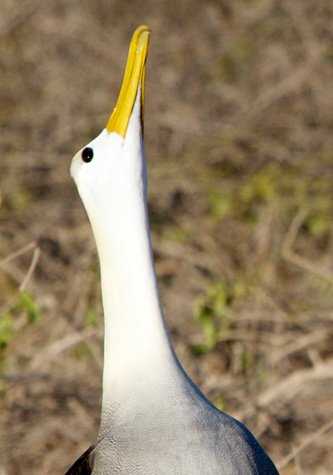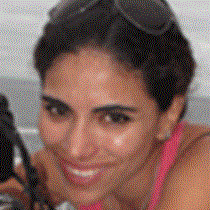Our first sunrise in Galápagos was beautiful. We were anchored off Gardner Beach, one of the most spectacular white coral sand beaches in Galápagos with an impressive colony of Galápagos sea lions. The air was warm and the water was calm, perfect for enjoying the sunrise.
Very early in the morning we took an optional kayak outing along the coast of Española. The colors were wonderful, turquoise water, black lava rocks, white sand, and some green patches of vegetation. Blue-footed boobies rested, others fished, while sea lions followed kayakers and here and there. Sea turtles popped their heads out of the water. After a good 40-minute kayak outing, it was time to go back on board for breakfast.
Soon after that, our expedition leader Lynn gave us a briefing on snorkeling gear and safety. Some of us headed out for deepwater snorkeling off Gardner Islet, while others went to the beach either to swim, relax, or just learn how to use the gear.
The deepwater snorkeling was very good. Even though the water was a bit cold at 70 degrees F, it was worth it! We saw plenty of fish such yellow-tailed razors, damsels, rainbow wrasses, and even the weird looking and frightening scorpion fish, well camouflaged on the rocks! A couple of sea lions played with us for a while and at the end of the activity we had the chance to see a big marble ray, swimming smoothly underneath our group.
Back on the ship, we changed into dry clothes and headed to the beach to spend some time with the sea lions and enjoy the beautiful scenery of the site. Lunch was an Ecuadorian feast that included ceviche made with fish, squid and octopus; encocado de pescado (fish with coconut milk), hornado (roasted suckling pig), llapingachos (potato patties with peanut sauce) and assorted salads. For dessert: postre de la tres leches (three milk cake), helado de naranjilla (naranjilla sorbet) and alfajores (cookies with caramel cream). After all that, it was siesta time!
At 3:30 p.m. we were ready to explore the other side of the island. Punta Suarez is famous for its abundance of endemic species found only on this island, such as the Española lava lizard, the Española racer snake, the Española mockingbird, and the always outstanding waved albatross. Other species include 3 of the 14 different species of Darwin finches, Galápagos doves, Galápagos hawks, blue-footed boobies, and Nazca boobies.
Baby sea lions were everywhere at the disembarkation area among piles of distinctively red-colored marine iguanas. As tropic birds soared in the air and Nazca boobies busily built their nests, we realized how special it was to be part of this isolated paradise.









